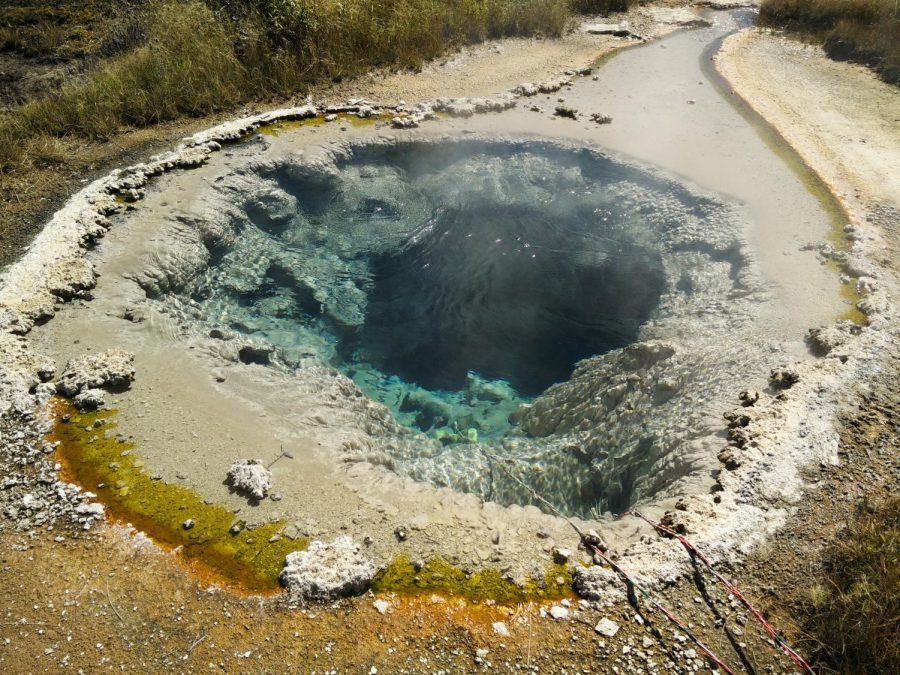New device furthers WSU research on thermal bacteria
Samples will grow on conducted surface, mimics environment
Thermal bacteria grows in natural springs located at Yellowstone National Park. The device WSU and Montana State University students use to collect samples is shown in the picture above.
March 18, 2019
WSU graduate researchers worked with Montana State University (MSU) students to find an improved method of enriching thermophilic bacteria — bacteria that thrive in water with high temperatures — in their native environment.
Abdelrhman Mohamed, WSU graduate research assistant, said WSU teamed up with MSU because their goals overlapped. They are researching the growth of thermophilic bacteria on an electrode.
“MSU has been studying thermophilic bacteria in Yellowstone National Park for a long time,” he said. “Our interest at WSU is biofilms, bacteria that aggregate together and one of the applications of biofilms is thermophilic bacteria.”
Mohamed said the biofilms are seen less in nature and more in biology labs. He said an example of biofilms is when you are walking in nature and you touch a rock that is slimy; there are some bacteria aggregated there.
Mohamed said the common way to test bacteria in hot environments is to take 20 liters of water sample back to the lab, filter it to concentrate the bacteria and then study it.
“Twenty liters is very heavy,” he said. “We thought maybe we can try to make bacteria grow more in their native environment.”
Mohamed said he came up with a portable potentiostat, a device that controls an electrode. The electrode is a conducted surface, which passes currents of electricity to allow the bacteria to grow in a small sample and in their own environment.
Phuc Ha, WSU postdoctoral research associate, said in order to test the device they needed to see if it worked in a real environment.
“We chose to go to Yellowstone National Park with Montana State because it is far away from human life,” she said. “In this experiment, we were very specific about the location, we wanted a place where humans do not interfere with the area.”
Mohamed said they also chose Yellowstone National Park because it had a wide range of temperature — ranging from 110 to 200 degrees between the four hot springs that were already mapped out by Montana State — giving them a controlled factor.
He said after 32 days of allowing the bacteria to grow on the electrode, they took the samples back to the lab to analyze what type of bacteria there was. They also measured the rate of chemical reaction; whether the bacteria has a high or low reaction.
“We found that this diverse group of thermophilic bacteria has a higher rate of reaction, which means that the electrode that have bacteria on them can either take more electron from electrodes or can give more electron to electrodes, breathing and eating electricity,” Mohamed said.
Ha said most all living organisms use electrons, tiny negatively charged particles, to power their bodies.
Mohamed said humans eat food to gain energy through the release of electrons that eventually combine with oxygen, while some bacteria donate their electrons to a solid conductive material, electrodes, in the absence of oxygen.
Ha said this diverse group of bacteria could help scientists create a more efficient data collecting and testing environment.
“Researchers are already using this bacteria to power the sensor to collect data in the middle of the ocean to measure water level, rainfall and temperature by using the bacteria to run electricity underneath the deep sea,” she said.
Mohamed said the next stage of their research is to understand more about the bacteria by feeding it with different food to see if it can produce valuable chemicals or consume undesirable pollution products to potentially help the environment.









